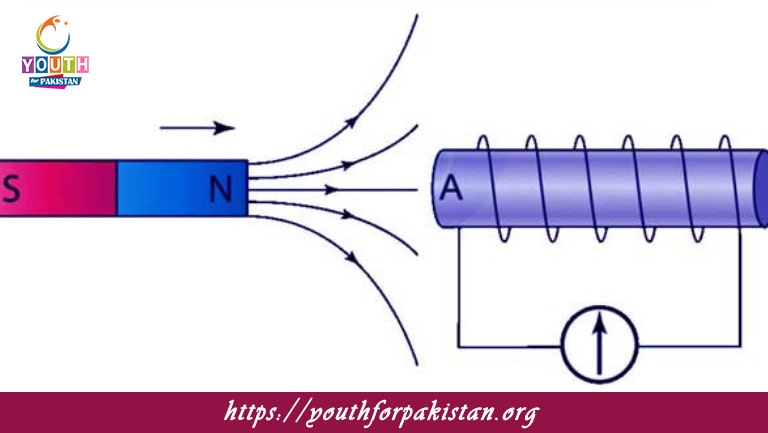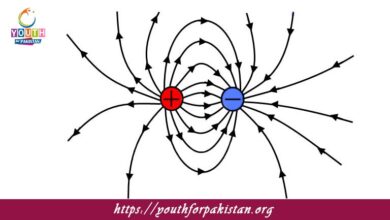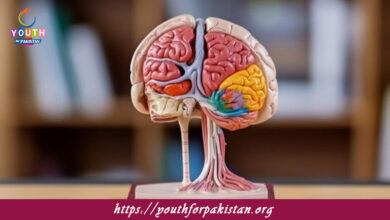Electromagnetic Induction MDCAT MCQs with Answers

Welcome to the Electromagnetic Induction MDCAT MCQs with Answers. In this post, we have shared Electromagnetic Induction Multiple Choice Questions and Answers for PMC MDCAT 2024. Each question in MDCAT Physics offers a chance to enhance your knowledge regarding Electromagnetic Induction MCQs in this MDCAT Online Test.
Electromagnetic Induction MDCAT MCQs Test Preparations
Electromagnetic induction is the process of generating an electromotive force (EMF) by:
a) Changing the magnetic field within a closed circuit
b) Moving a wire through a magnetic field
c) Changing the current in a wire
d) Using a battery in a circuit
The unit of electromagnetic induction is:
a) Henry
b) Tesla
c) Weber
d) Ampere
Faraday’s Law of Electromagnetic Induction states that the induced EMF is proportional to:
a) The rate of change of magnetic flux
b) The strength of the magnetic field
c) The area of the coil
d) The temperature of the conductor
Lenz’s Law states that the direction of induced EMF will always be such that it:
a) Opposes the change in magnetic flux
b) Enhances the change in magnetic flux
c) Is perpendicular to the magnetic field
d) Is parallel to the current flow
The induced EMF in a coil is directly proportional to:
a) The number of turns in the coil
b) The length of the coil
c) The volume of the coil
d) The resistance of the coil
The formula for calculating induced EMF (E) is:
a) E = -dΦ / dt
b) E = Φ × t
c) E = dΦ / dt
d) E = B × A
The phenomenon where a changing magnetic field induces an EMF is known as:
a) Electromagnetic induction
b) Magnetic flux
c) Faraday’s effect
d) Lenz’s effect
If the magnetic flux through a coil is increased, the induced EMF will:
a) Increase
b) Decrease
c) Remain the same
d) Be zero
The rate at which magnetic flux changes affects the magnitude of:
a) Induced EMF
b) Magnetic flux
c) Electric current
d) Magnetic field strength
The direction of induced EMF in a conductor is determined by:
a) Faraday’s Law
b) Lenz’s Law
c) Ohm’s Law
d) Ampere’s Law
If a magnet is moved towards a coil, the induced EMF will:
a) Be positive
b) Be negative
c) Reverse direction
d) Be zero
The magnetic flux (Φ) through a surface is given by:
a) Φ = B × A × cos(θ)
b) Φ = B × A
c) Φ = B / A
d) Φ = A / B
The factor that does not affect the magnitude of induced EMF is:
a) The speed of motion of the magnet
b) The number of turns in the coil
c) The resistance of the coil
d) The area of the coil
The unit of magnetic flux is:
a) Weber
b) Henry
c) Tesla
d) Ampere
The rate of change of magnetic flux through a coil is given by:
a) dΦ / dt
b) Φ / t
c) Φ × t
d) dΦ / dA
In electromagnetic induction, the direction of induced current is such that:
a) It opposes the change in magnetic flux
b) It enhances the change in magnetic flux
c) It aligns with the magnetic field
d) It is perpendicular to the magnetic field
The phenomenon of electromagnetic induction was discovered by:
a) Michael Faraday
b) James Clerk Maxwell
c) André-Marie Ampère
d) Hans Christian Ørsted
The formula for calculating the magnetic flux through a coil is:
a) Φ = B × A × cos(θ)
b) Φ = B / A
c) Φ = A × cos(θ)
d) Φ = B × A
If the magnetic flux is constant, the induced EMF is:
a) Zero
b) Maximum
c) Dependent on the area
d) Independent of the area
In an AC generator, electromagnetic induction is used to:
a) Convert mechanical energy into electrical energy
b) Store electrical energy
c) Increase the voltage of a DC source
d) Decrease the resistance of a wire
The magnitude of induced EMF is directly proportional to:
a) The rate of change of magnetic flux
b) The magnetic flux
c) The resistance of the coil
d) The current flowing through the coil
The SI unit of EMF is:
a) Volt
b) Ampere
c) Ohm
d) Coulomb
A changing magnetic field induces an EMF in a conductor because:
a) It creates an electric field in the conductor
b) It changes the resistance of the conductor
c) It changes the length of the conductor
d) It increases the temperature of the conductor
The self-inductance of a coil depends on:
a) The number of turns and the area of the coil
b) The magnetic flux
c) The current passing through the coil
d) The temperature of the coil
Mutual induction occurs when:
a) The magnetic field of one coil induces EMF in a neighboring coil
b) The magnetic field of one coil induces a current in itself
c) The electric field of one coil induces EMF in another coil
d) The temperature changes in the coil
The induced EMF in a moving conductor is proportional to:
a) The velocity of the conductor and the magnetic field strength
b) The resistance of the conductor
c) The length of the conductor
d) The temperature of the conductor
The self-inductance of a solenoid is:
a) Directly proportional to the number of turns squared
b) Inversely proportional to the number of turns
c) Directly proportional to the resistance of the solenoid
d) Inversely proportional to the area of the solenoid
An alternating current (AC) in a coil generates:
a) An alternating magnetic field
b) A constant magnetic field
c) A static electric field
d) A constant electric field
The magnetic flux through a coil is given by:
a) Φ = B × A
b) Φ = E × t
c) Φ = dB / dt
d) Φ = E / A
The induced EMF in a coil is equal to:
a) The negative rate of change of magnetic flux
b) The positive rate of change of magnetic flux
c) The square root of the magnetic flux
d) The magnetic flux divided by the area
A stronger magnetic field will result in:
a) A larger induced EMF
b) A smaller induced EMF
c) No change in the induced EMF
d) An increase in resistance
The rate of change of current in a coil leads to:
a) Induced EMF in the coil
b) A change in magnetic field strength
c) A change in the area of the coil
d) A change in temperature
When a magnetic field through a coil increases, the direction of the induced EMF will:
a) Oppose the increase in magnetic flux
b) Enhance the increase in magnetic flux
c) Remain unchanged
d) Be aligned with the magnetic field
In a transformer, electromagnetic induction is used to:
a) Change the voltage of an AC signal
b) Store electrical energy
c) Convert AC to DC
d) Increase the temperature of the signal
A coil with more turns will have:
a) Greater induced EMF for a given change in flux
b) Less induced EMF for a given change in flux
c) No effect on induced EMF
d) Reduced resistance
The induced EMF in a coil with an increasing magnetic field is:
a) Positive and proportional to the rate of change
b) Negative and proportional to the rate of change
c) Zero
d) Independent of the rate of change
A galvanometer can be used to measure:
a) Induced EMF
b) Magnetic flux
c) Current in a circuit
d) Voltage across a capacitor
The phenomenon of self-induction results in:
a) The generation of an EMF within the same coil
b) The generation of an EMF in a neighboring coil
c) The storage of energy in a capacitor
d) The conversion of mechanical energy into electrical energy
The self-inductance of a coil is affected by:
a) The core material
b) The temperature of the coil
c) The power supply
d) The frequency of the current
The induced EMF in a coil moving through a magnetic field depends on:
a) The speed of the motion and the strength of the magnetic field
b) The temperature of the coil
c) The length of the coil
d) The resistance of the coil
If you are interested to enhance your knowledge regarding Physics, Chemistry, Computer, and Biology please click on the link of each category, you will be redirected to dedicated website for each category.





